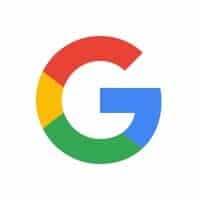Sure.
Me: Final question, is it ok to assume that the users can see, smell, taste, and are mobile.
Interview: Yes, go ahead.
Summarizing: Design a fire alarm for completely deaf users for residential usage. The users do not have any other constraints. I will let the pain point dictate if I would go with a hardware or software route.
Me: Now that I understand the question, Let me share a rough structure I have in mind. I am going to think of the goal of this product, then what we should build- such as users, pain points, and solutions, followed by final consideration like how would I measure success. Does that sound good to you?
Interviewer: Yes, go ahead.
Starting with the mission/goal – Saving lives: To provide a timely and accurate warning to all members of the household including those who are deaf
For the objective of the product, I would focus on engagement which is an indicator of the value we are providing to the users who are completely deaf
Me: Next, I would want to look at users, archetypes, personas. Could I take a minute to put my thoughts?
First, I would like to point out there are various users that need to be taken into consideration while designing this product- The deaf users, people who live with the deaf users, neighbors, Fire responders. Here I would focus on the interaction of the deaf user with the product.
Since it is a mandate for homes to be equipped with a fire alarm, I would assume all the houses already have one or many. So instead of focusing on replacing them with a brand new product, I will focus on augmenting the existing setup.
Me: I am going to take a moment to see if I can segment the deaf archetype further to see if I can find interesting pain points so that I could empathize with them. If there are no specific segments, I would go with the broad user set of deaf users for the sake of this interview.
Based on demographic:
Age: Young independent adults who were born deaf or have become deaf due to an accident to Seniors who have become deaf due to age
Tech savviness: Who are highly tech-savvy to people who are not (possibly seniors)
Location: Being at home or away from home. A related dimension would be to be alerted when there is an alarm in the neighborhood as well.
I see an interesting user segment of Seniors who may not be tech-savvy to focus on since the solutions when developed for them can help the wider user group as well. I will also primarily focus on alerting the user when they are in the house and of threats from within their house. Does that sound good
Interviewer: Yes, go ahead.
Me: Let me take a moment to write down the pain points
I will look at the user journey to understand the pain points – Normal operation, during an emergency, Post an alert.
Normal Operation:
1] I want to test if the fire alarm is working, but I am unable to since it only has sound-based validation.
During an emergency
2] I want to be alerted of a potential fire hazard, but the current fire alarms only have audible alerts.
3] I want the fire station to be alerted in case of a fire hazard, but I don’t know or get a confirmation of the same.
4] I want the fire station to control the fire alarm and provide me instructions to escape, but I cannot follow any voice-based instructions.
Post an alert
5] I want to turn off the fire alarm in case of a false alert, but I do not want to climb and push the button.
Of these pain points, I would like to focus on [2] and [4] since it is core to our objective of saving lives. Is that good?
Interviewer: yes
Summarizing: Design a fire alarm for completely deaf users for residential usage, with a focus on seniors who may not be tech-savvy. The key pain points I am focusing on are around operations during a fire hazard.
Me: Let me take a couple of mins to brainstorm solutions
a] Connected house
Devices at home are connected with the fire alarm like TV and appliance
Alerts the user through visual clues and vibrations and provides some omnipresence.
b] App on the mobile phone
a mobile app, that is integrated with the fire alarm
Alerts the user through push notification and vibrations
c] Hologram solution
Personal hologram solution that is installed on top of the fire
That can alert and as well guide users through sign language on the next steps to be taken in case of fire alarm
d] Wearable
A simple wearable that could be worn
which will alert through vibrations and can be used for letting emergency services know, through pre-built alerts, etc.
Prioritizing the solution based on impact, effort, and as well mapping it to our goal.
The hologram solution is really cool but is difficult to implement and also may not help to wake up users from sleep. So I would look at this option in addition to something else as it addresses pain points [4]. Similarly given our user segment is not highly tech-savvy, I will rule out the connected house, as it may be expensive as well and again may not help when in sleep.
Of the remaining two solutions, both mobile app and wearable are good solutions. Again, given the users may not be constant users of mobile phones, I will first start with the wearable.
Let me explain the wearable solution a little more
Entry point: A simple wearable that matches the style of the senior age group, like either a bracelet or a necklace that the senior could wear which will alert them through vibration when there is a fire hazard. This is something that will help them even during sleep.
How it works: It gets activated as it is connected to the fire alarm within the house. The same wearable could have some simple physical control buttons to acknowledge the alert, respond to alerts like turning off in case of a false alarm, informing emergency services, etc.
Critical action: The user acknowledging through the physical buttons on the wearable whenever they get alerted
Me: Any questions on the solution
Interviewer: Good, could you let me know, how you would measure the success?
Me: Sure. For this product, the most important metric is % of people who got alerted in correlation to the fire alarm and took one of the critical actions of acknowledgment.
Let me also touch downside of this metric, as I said this single metric does not tell the full picture, like referrals, etc. For example, I would like to track if the users are recommending this to others in their community to track adoption. Also, it is not clear what is driving this metric, meaning if the metric is low, why is that so. I would like to track if this is being worn always, battery replacements, etc.
Let me summarize: Design a fire alarm for completely deaf users for residential usage, with a focus on seniors who may not be tech-savvy. The key pain points I am focusing on are around operations during a fire hazard. We looked at few solutions and narrowed them down for this exercise to a wearable that will alert through vibrations and visual indicators. It also has simple physical controls. We also looked at metrics to measure the success of this solution and a couple of counter metrics as well.
It is only starting point we just picked one user segment, a couple of pain points, and one solution. I can see how this wearable could be further extended, to even get activated based on tuning into fire alarm sounds, included with GPS, etc. which will help with neighborhood alerts and will increase the coolness quotient.


 Meta
Meta Google
Google Uber
Uber